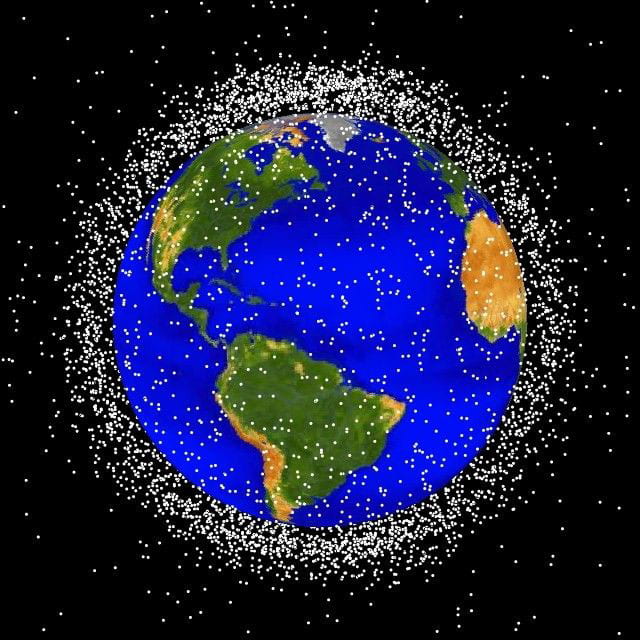Researchers propose zapping space debris with laser
A research team that includes UC Irvine proposes using a laser mounted on the International Space Station to zap threatening space debris.

Planet Earth is surrounded. Thousands of tons of dangerous space debris circles in low orbit, threatening serious damage, even death, if any were to strike the International Space Station. A proposal by a research team that includes UC Irvine could be the answer. In a paper to be published Friday, April 24, the scientists describe a device that would sweep the debris away – and in a spectacular fashion: shooting at it with a laser mounted on the space station itself. The laser would be guided by a telescope to pick out the often tiny pieces of space junk, said UCI physics & astronomy professor Toshiki Tajima. Then, with a few quick zaps, the laser would slow down the hurtling bits, causing them to fall and burn up in the Earth’s atmosphere. In their paper for the science journal Acta Astronautica, Tajima and his colleagues suggest a kind of technological tag team. A telescope previously proposed for the space station to detect high-energy cosmic rays would, part of the time, work in tandem with the laser to knock out space debris. Such a project is years away, Tajima noted. First, a laser system that he and his team invented – which, potentially, could shoot coherent beams with enough power to get the job done – must be scaled up. Then a space agency would have to back the proposal, load the necessary components onto a rocket and send them to the space station. “The concept shows it is possible,” Tajima said. “It has to be demonstrated; there’s still a long way to go.”